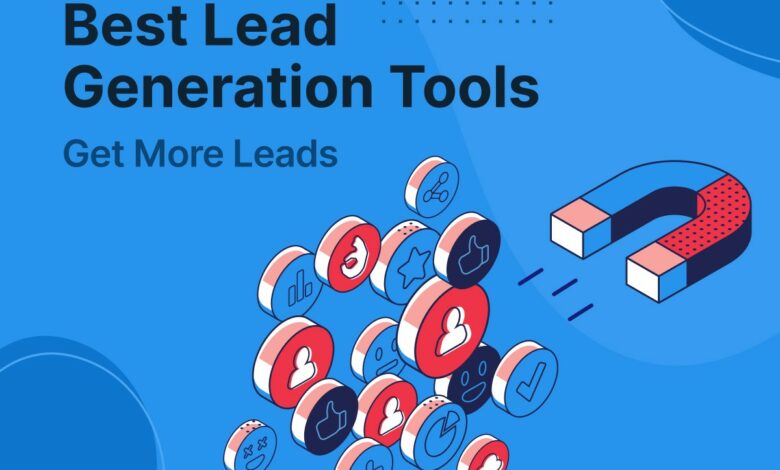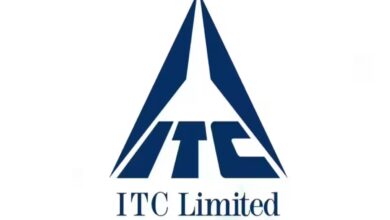Top B2B Lead Generation Tools Post Covid-19

None of us saw the pandemic coming—nor the effects it would have on business models, industries, and marketing strategies. It challenged existing B2B rules and laid many a wonderful plan to waste.
With economic analysts and global leaders debating over the world’s ability to go back to pre-pandemic times, we know one thing.
As B2B sellers, we must shake off the ashes, adapt, and proactively create sweeping customer outreach models to attract customers and drive profitability.
We must implement inbound and outbound lead generation strategies that will open doors to new customer segments and potential sales.
To that end, here are 5 B2B lead generation tactics brands can implement to maximize success.
1. Rediscover the Journey
Both internally and for your customer as well. Because without this first step, no tool will produce results successfully.
As many businesses have learned, what worked historically may not be so successful today and stable, predictable growth isn’t guaranteed.
Internally, brands need to build up long-term resilience that will take them through future unforeseen disruptions. They will need to:
- Designate crisis response teams that plan and prepare for unforeseen disruption. The response plans these teams come up with should align with your overall strategy, purpose, and goals.
- Break down silos between teams to ensure seamless information sharing, software integration, and the use of technology that supports crisis response
- Identifying and quickly tapping into emerging needs resulting from the changing landscape
As far as attracting and converting leads go, re-imagining their way of thinking and buying behavior is critical.
Start by researching the pandemic’s impact on the industries you target and consider the following:
Are your solutions still relevant?
How is the demand?
What extra pain points or opportunities have emerged?
Can you handle them, or would you need to diversify to meet these needs?
Think about your buyers. What has changed? Do they prefer reading or watching educational videos over speaking with sales reps?
If they like self-educating, what content format appeals to them? Are you already creating it or do you need to start?
If they are into calls and meetings, are your teams armed with the right information to make the interactions successful?
2. Turn Your Website into a Lead Generation Machine
A study that analyzed over a billion website pages revealed that more than 90 percent received zero traffic from Google. No, Google is not the problem, the pages are.
You certainly don’t want your website falling into that category.
Here are useful tips to help you move to the under 10 percent that generates leads:
- Optimize for performance. Focus on technical performance as well as high-quality content. Search engines favor fast loading times, straightforward navigation, and mobile-friendliness. Content that reads well and conveys your solutions’ benefits concisely is also preferable.
- Leverage data to pinpoint your target audience. Analytics can help you assemble buyer personas that deliver the highest win rates and maximum profitability. Use this information to target prospects in this range with customized messages that pique their curiosity and increase engagement.
- Present your core pages. Present all core pages on the homepage to provide a clear path for visitors to identify the section that appeals to them and head there. Add pricing tables or “request quote” buttons to help visitors know if they can afford you.
- Optimize your landing page. Use easy-to-understand designs. Highlight what will change for the customers who use your solutions and ensure your CTAs revolve around these benefits. Ask for minimum information to start a conversation.
- Put your experience to use. Speak to potential customers from a viewpoint they can relate to. Add a list of companies (especially the well-known ones) you’ve worked with, share customer testimonials, and use case studies to present your expertise and professionalism.
3. Make Cold Calls
Post-covid, businesses that sit back and hope potential customers find them through inbound strategies alone will hardly achieve desirable results.
You’ve got to prospect, get on the phone, and talk to potential customers about the value you can bring into their business.
Cold calling is a strategic game where your buyer persona profiles and marketing intelligence help you identify potential customers that you can contact.
With every interaction, you learn what works, and what customers are looking for, and personalize your message further.
You then measure the results of your cold calling efforts to see if you’re reaching your goals and tweak your approach accordingly.
The strategy is both fun and creative, as it is demanding. Here are skill sets that may help you sail through.
- You’re likely to get hung up on, hit voicemail severally, meet rude people, and get disappointed. It’s easy to give up but we can tell you nothing beats a win. So keep pushing and don’t succumb to rejection.
- Stay positive. People can tell if we’re discouraged. It’s right there in the tone of voice and can put off a prospect. If you’ve just come off an unproductive call, take a moment to breathe, then get to the next call like nothing bad had happened.
- Stay calm. Many B2B prospects report sales rep cussing on the phone. Under no circumstance should you lose your cool with the prospect lest you jeopardize future interactions.
- Be relatable. Develop the ability to show prospects that you understand their challenges, see their needs and care about their success. Try and build rapport with the contact person as well. People buy from those they feel they can trust.
- Be knowledgeable. You’ll be surprised how many prospects know a thing or two (perhaps more) about the type of solutions you sell and will test your knowledge. So know your stuff including what the competitor offers, their strengths and weaknesses.
4. Invest in Lead Generation Software
Identifying and qualifying leads is a time-consuming task that can prove challenging to professionals with full schedules.
Being human, chances are that you may work with decayed or inaccurate data that diminishes your success at bringing suitable leads into your funnel.
Lead generation software facilitates an accurate lead generation, qualification, and management process to serve up contacts that your team can approach.
The heightened accuracy level allows teams to analyze potential targets and personalize communication for greater success.
Additional benefits of lead gen software include:
- Large-scale lead generation. The software carries out broadened consumer searches to help generate more leads, including those from previously unexplored channels. You can analyze these untapped leads’ needs and potentially customize messages for them.
- Identifying new prospects. The software sheds light on how people are interacting with you i.e. through landing pages, email open, or content downloads. Based on the person’s actions, the software measures their sales readiness and defines the next action. This ensures your team only works on well-qualified leads.
- Pinpointing strategies that work. Through lead source tracking, you can identify the strategies that bring in quality leads and maximize them.
- Scheduling reminders. A solid lead gen software allows the user to come up with customer interaction flow charts and “next steps” to increase efficiency. It can also schedule reminders to ensure you carry out timely follow-ups.
5. Email Marketing
Business success starts with generating leads.
Leads are brands that are interested in your offerings and email marketing is the strategy that helps retain this interest and nurture it into conversion.
But before we jump the gun, thinking about conversions and all, the leads must come from somewhere, right?
Here’s how to use this very strategy to generate leads:
- Create lead magnets. Study existing and emerging pain points or needs to create resources that can help your audiences. Cheat sheets, interactive calculators, surveys, industry analyses, educational webinars, and ebooks are great lead magnets you attach an opt-in form to.
- Attract people with valuable content. Lead magnets aside, you’ll also need relevant and informative content to encourage sign ups and keep subscribers. Use diverse content formats, including blogs, videos, webinars, infographics, etc
- Leverage social media. Use free and paid posts to promote your offerings and generate email leads. With close to 4 billion users, you can go for platforms that offer ad targeting options to reach potential customers in specific locations, demographics, and interests.
- Partner with an SDR service company. These professionals have their ears on the ground to discern new trends and devise competitive ways to generate leads. It takes the pressure off your team who can now concentrate on closing.




